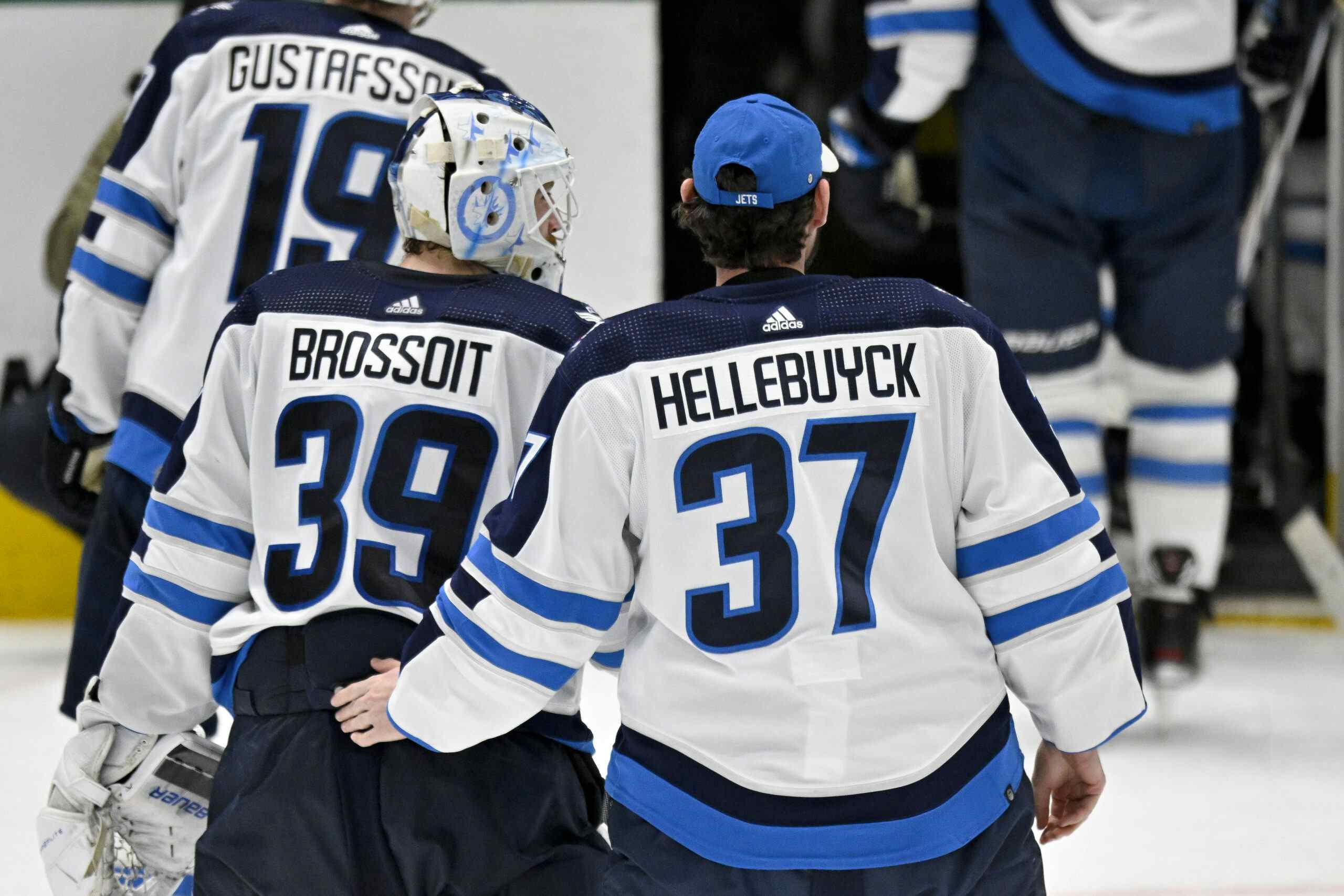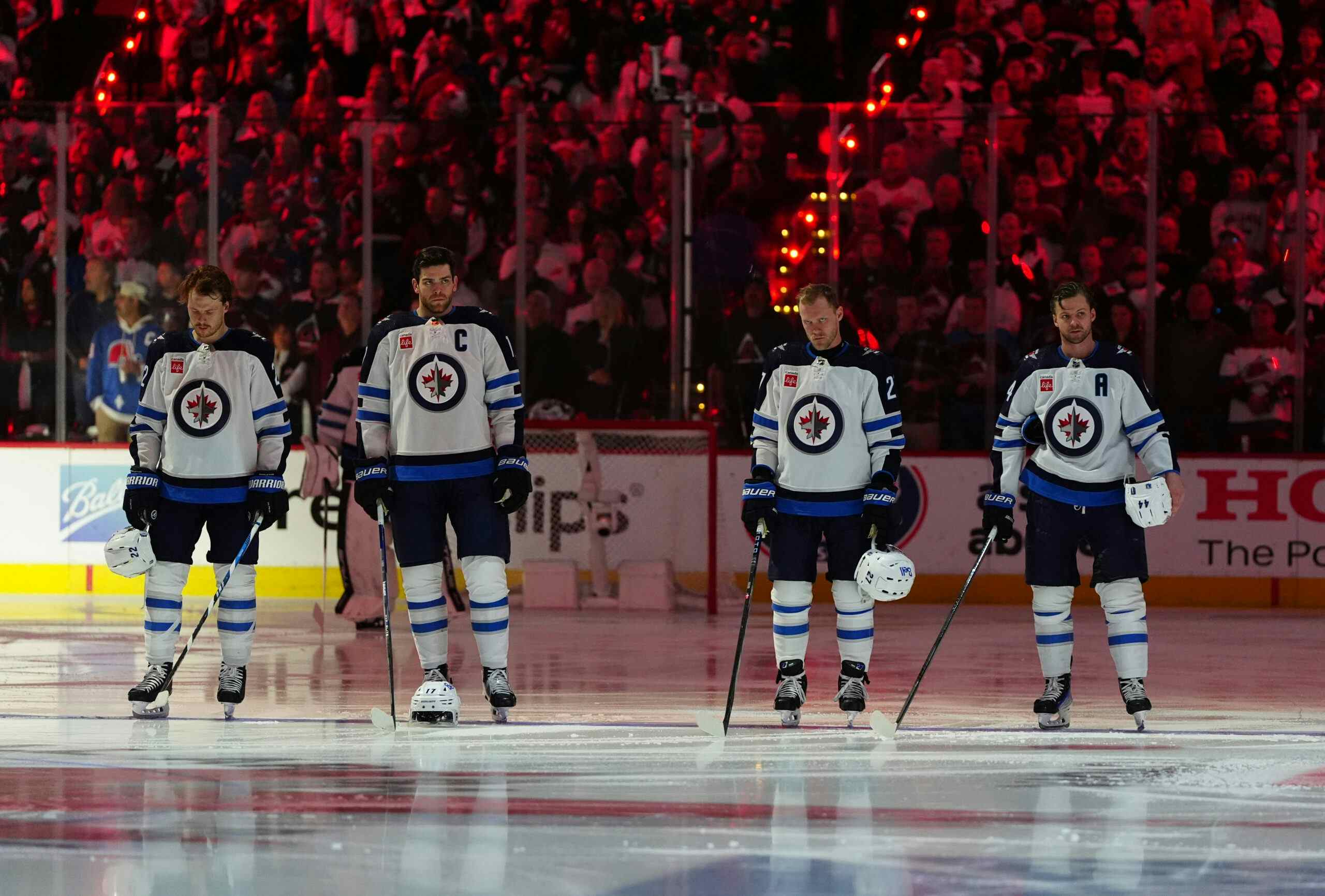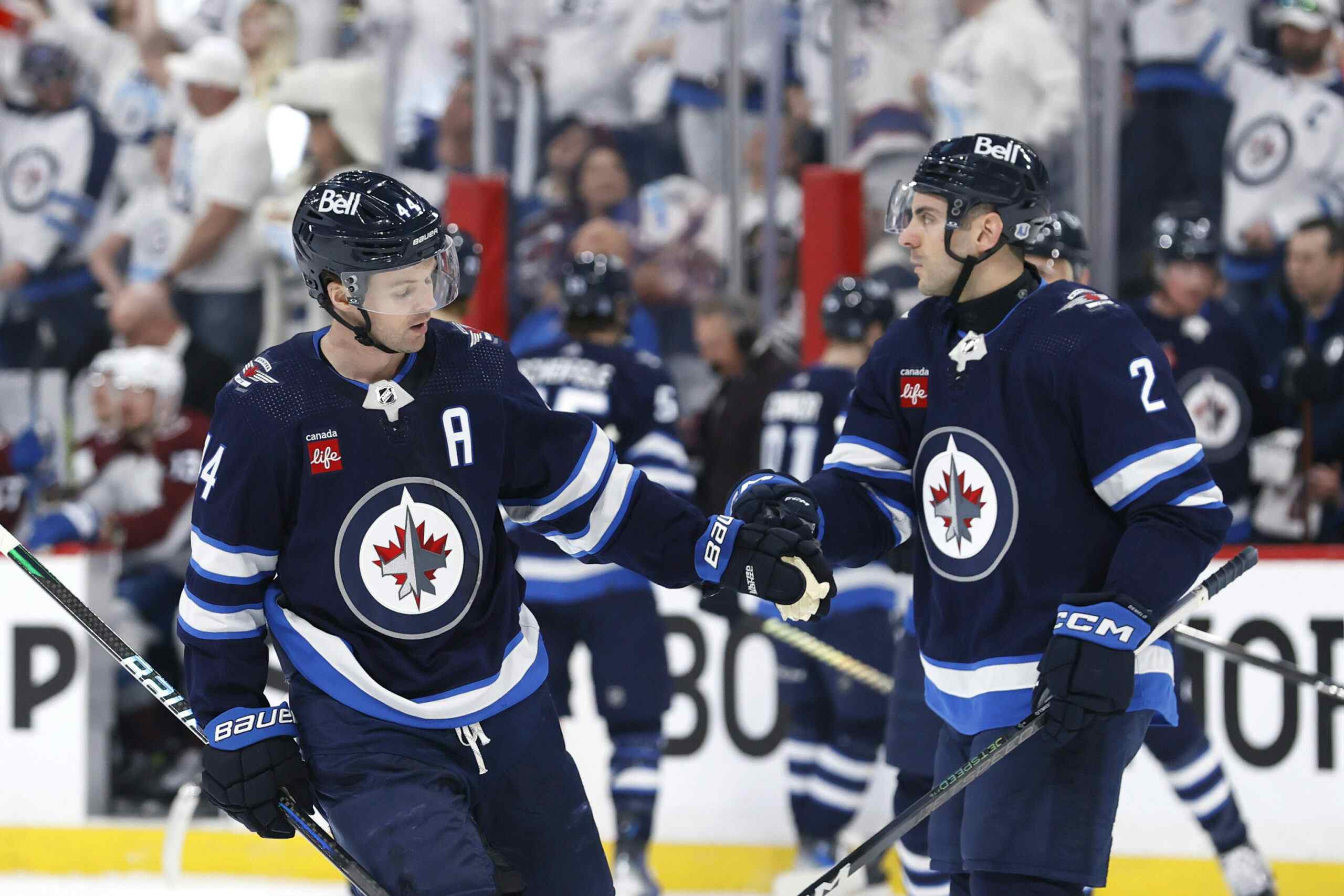Taking the Body
By Rhys Finnick
10 years ago
As our own Kevin McCartney documented last week, the Winnipeg Jets use a very aggressive forecheck. The three forwards attempt to trap the puck-carrier in his own corner, sealing off any possible exit strategies up the boards or into the open ice.
Aggressive forechecks are going to get caught up ice sometimes. That’s one of the trade-offs of getting beneath your opponent’s goal line. However, the Jets’ forecheck has been noticably struggling all season, and it may have something to do with a preoccupation towards ‘Taking the Body,’ even finishing their check after the play on the puck has already been made.
The supposed purpose of finishing a check is to let your opponent know they will be punished every time they touch the puck. It’s hard to believe that an NHL player would be intimidated by this Taking the Body approach. Every player league-wide has played high level hockey for the majority of their lives, and yet, somehow, someway they’ve all found a way to overcome their fear of body-checks and make high calibre plays.. Hockey is a fearless game, and the players who were good enough to make it to the NHL know how to play that way. And yet some coaches expect their players to finish every check, to Take the Body – especially come playoff time.
Here is an example of when taking the body was the wrong decision from Friday’s shootout win against the Blues:

Bouwmeester (off-screen) has just made a pass from his own end up to his partner Pietrangelo (27) in the neutral zone. Pietrangelo fumbles the puck trying to make a lead pass and turns back to get the puck, putting his body in an awkward position even after he spots Kane (9) making a beeline toward him. But he does it to make a play on the puck.


Kane, determined to Take the Body, doesn’t see Pietrangelo’s error. Kane instead braces himself for the hit.

Kane has pinned Pietrangelo, but Pietrangelo is the only one who is able to get a stick on the puck, however feebly, and Kane can’t even see it. The result was an elbowing minor for Kane, instead of a two-on-one for Kane and Wheeler (26) on Bouwmeester.
From the same game and period, here is another example of Taking the Body gone wrong. This time we see a sloppy forecheck from the Cormier/Jokinen/Peluso line:
Byfuglien (33) starts deep in the Blues’ zone, poking the puck up the boards towards Jokinen (12) and away from Polak (46) and Sobotka (17). Jokinen ignores the puck, instead electing to run over Sobotka, who still manages to get the puck by Jokinen and towards the blue line. Byfgulien covers over top and a board battle throws the puck back behind the Blues’ net where Sobotka and partner Shattenkirk (22) both go to retrieve it. Peluso (14), who has been covering for Byfuglien at the right point, races in to hit Sobotka, but neither looks at the puck nor tries to get a stick on it. A couple seconds later, the Blues are able to break out of their zone with all three Jets forwards starting their back-check from below the goal line.
This is all not to say that Taking the Body is always a bad hockey play. A body-check is meant to separate the player from the puck, but there is a much more effective way to Take the Body and still give yourself a chance at gaining puck possession. We saw Byfuglien do it in the play above, in fact. Vancouver’s Sedin twins are masters of Taking the Body effectively. Though they are often mislabeled as soft, the Sedins play a very physical game based around Taking the Body, gaining possession, and starting a cycle.
Here’s a example from a couple seasons back against the Blue Jackets:

You can see here that Dorsett (15) and Henrik Sedin (33) are both tracking the puck coming from around the boards, with Dorsett on the inside. Sedin has his stick prepared to poke Dorsett’s and his left hand ready to ride the defenceman into the boards.

Sedin presses Dorsett into the boards, Taking the Body, and knocking the puck loose with his stick.

Sedin is then able to use his momentum to push off of Dorsett and gain possession of the puck, eventually leading to a goal for brother Daniel.
There’s a right way and a wrong way to Take the Body. Many teams still insist on hitting quantity rather than quality. The idea of body-checking – and by extension Taking the Body – is to use your body to separate your opponent from the puck. When the focus is instead on punishing your opponent, the intensity of the collision often takes both players out of the play. The Jets could make improvements on the execution of their forecheck just by caring about the puck more, and thinking offence instead of punishment.
It’s time more teams dropped their focus on making sure players Take the Body, and switched to worrying whether their players Take the Puck.
Recent articles from Rhys Finnick





